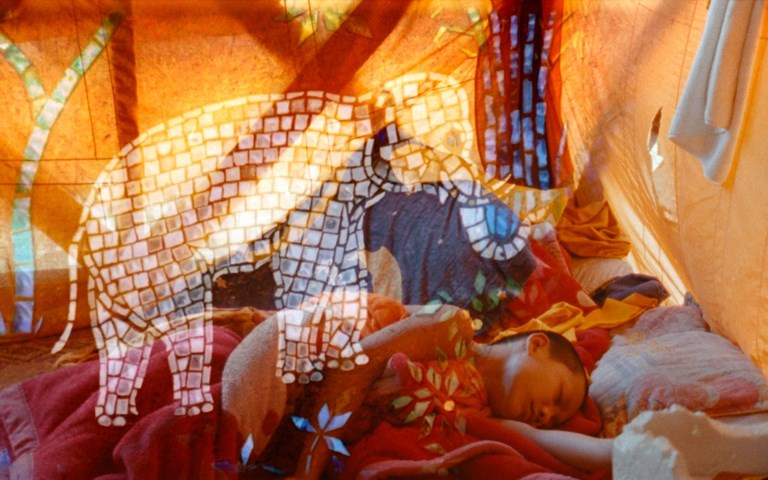Now, please, close your eyes. And let Lois Patiño’s latest film lead you through the afterlife, on a sonorous and deeply sensory journey into that most fundamental of unknowns: what happens to us in the moments after death.

Samsara opens in the temples of Luang Prabang in Laos. A teenager helps an elderly woman, Mon, prepare for death by reading aloud from the Bardo Thodol, or The Tibetan Book of the Dead, an ancient spiritual text that both describes and helps guide people through the bardo, the liminal stage between life and the next rebirth. The film’s title references the Buddhist concept of the wheel of life, an endless cycle of reincarnation and suffering that we can only escape through enlightenment. Cue a fifteen-minute light-and-sound sequence in the middle of the film that marks the transition from one life to the next: an invitation to close our eyes and not open them until the film goes silent. What happens in between can be deeply affecting. As coloured lights play on closed eyelids, it creates, for some, a feeling of weightlessness, akin to the ‘spirit’ waiting to land in the next body. On the other side of the bardo, we wake up in Tanzania with a young girl called Juwairiya, delighted by the birth of a new baby goat.

Samsara (2024)
‘With Samsara, as with my earlier work, I am interested in how different cultures reflect on death and try to respond to this mystery by creating narratives, legends, and myths,’ Patiño tells me. In his first two features, the documentary Coast of Death (2013) and the impressionistic fiction film, Red Moon Tide (2020), the Spanish experimental filmmaker turned to his native Galicia and its rich folklore of sea monsters, witches, and shipwrecked sailors. ‘From the beginning, when I was finding my voice, I focused on landscape: how we look to landscape and how landscape looks to us. This is one of the seed ideas in my work. It comes from that experience of the sublime, but it’s also about immersion. It’s a very similar experience – looking at a landscape and sitting in a theatre – it’s an image in the distance you can be immersed in.’ In Samsara, these landscapes are as much internal as they are external, evoking hypnagogic visions in those crucial moments right before sleep.
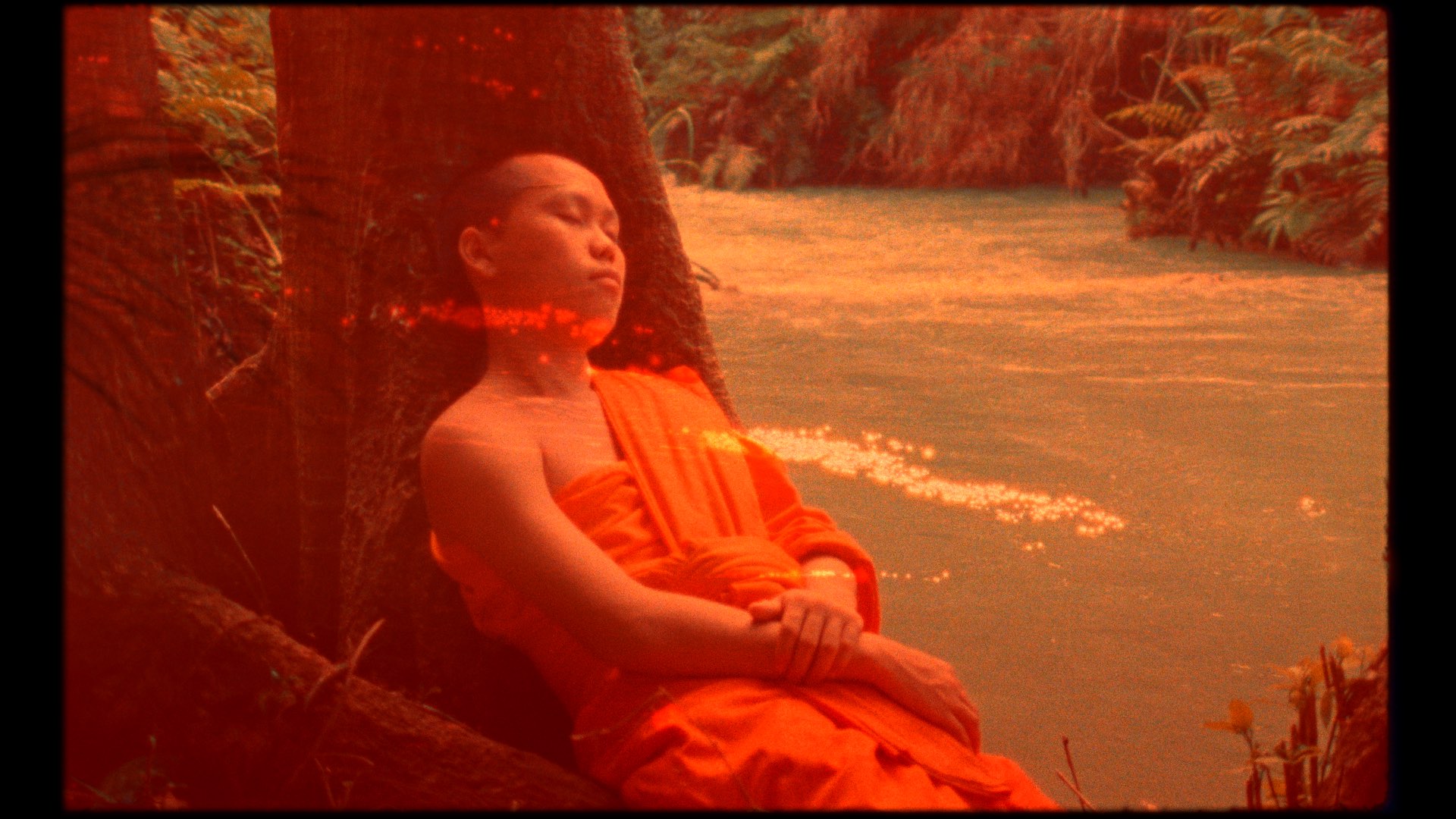
Experimental cinema has variously played with the perceptual properties of flashing film frames, like the flicker films of artists Tony Conrad, Peter Kubelka, John Latham, and Paul Sharits. Whereas many others have also sought to evoke mental states beyond the realms of the rational mind using film, including the American West Coast animator Jordan Belson who drew on his experiences of meditation and yoga for short, visionary films like Allures (1961) and Samadhi (1967). With an interest in reincarnation, sleep, and dream states, Thai filmmaker Apichatpong Weerasethakul’s influence weighs heavily on Samsara too.
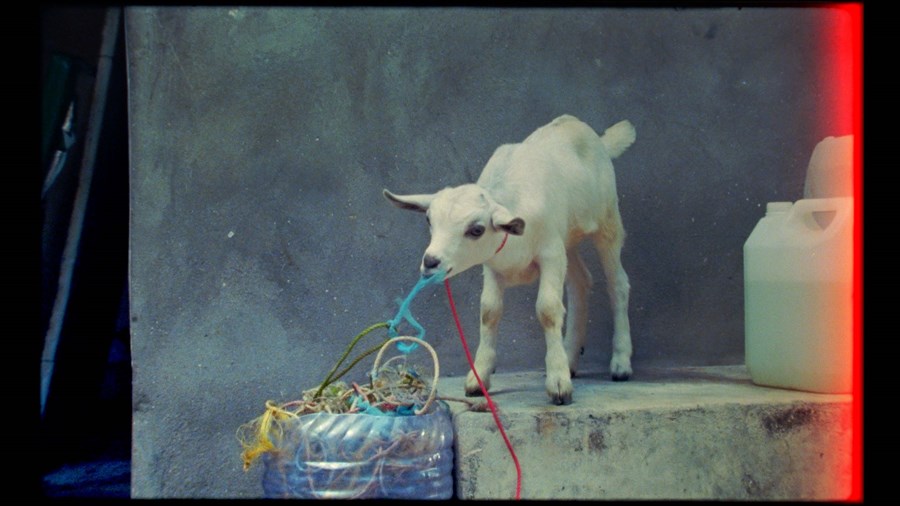
Samsara (2024)
Mainstream narrative cinema has also adopted experimental film techniques in special-effects sequences that lead viewers on extraordinary, out-of-body trips. Just look at the Stargate Sequence in Stanley Kubrick’s 2001: Space Odyssey (1968) or Gaspar Noé’s post-death, wall-traversing POV in Enter the Void (2009). It’s interesting, then, that Patiño’s influences for the closed-eye sequence largely emerge from sound and light art as opposed to the cinema. Although to some degree separate to the fabric of the film, the colour-bath segue significantly alters how viewers perceive the narrative sections on either side of it.
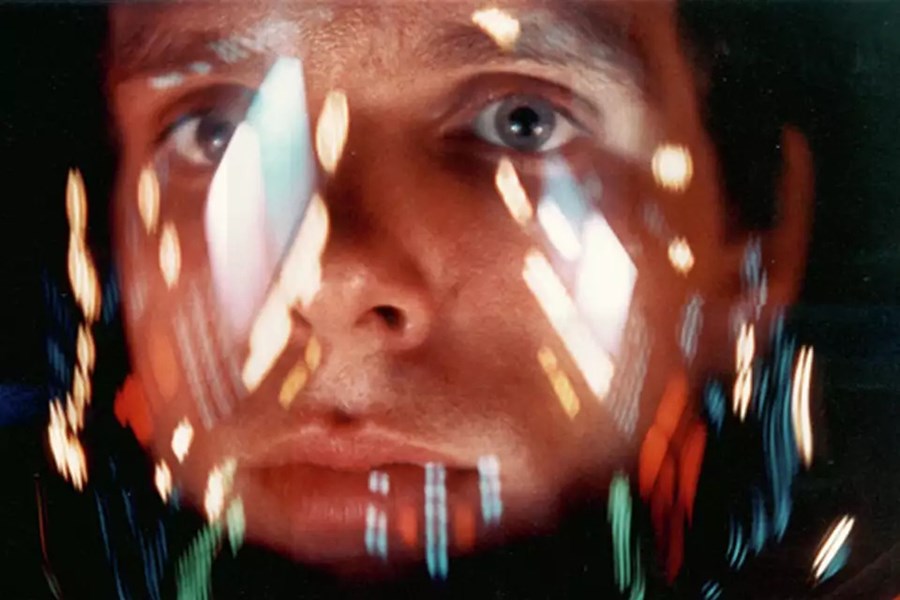
2001: A Space Odyssey (1968)
One of the biggest guides for that sequence was a sound art piece Patiño experienced at the Reina Sofía Museum in Madrid. ‘The Spanish sound artist Francisco López gave audiences the instruction to close their eyes: it was a one-hour trip that took us to different places. It’s very similar to Samsara but I added the light experience,’ Patiño says. In this, he drew on the light fields of American artist James Turrell: ‘I remember one work that touched me very deeply called Light Breathing – a fade in and fade out of light. You could feel the light going inside and outside you.’
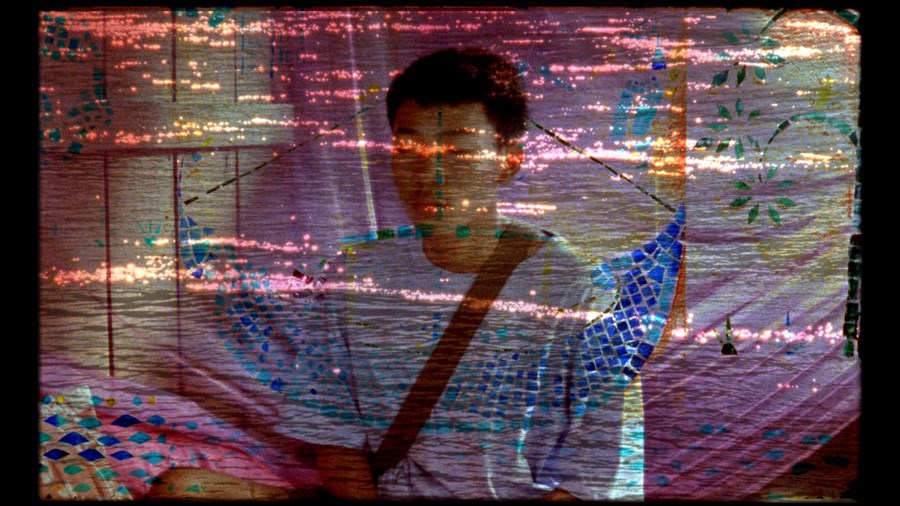
Samsara (2024)
Samsara’s sound design was carefully orchestrated to guide you through the trip to the other side. ‘The first half is more or less a poetic translation of the sounds described in the Bardo Thodol: it’s a very detailed description of what you hear after death: storms, winds, thunder.’ In the second half, Patiño asked sound designer Xabier Erkizia to take audiences to different places around the world. ‘Because we don’t have the screen as a reference, we can get even more involved with what is happening. My idea was that they appear as places that are tempting the soul to reincarnate there.’ Erkizia worked with field recordings that he’d created across his career in different countries and languages. ‘We hear a woman cooking in Timor, speaking in a language that isn’t spoken anymore. We hear the sounds of bees, which in some cultures are connected to the soul. There are many, many details in the soundscape.’
Derek Jarman’s Blue (1993) also impacted the middle sequence of Samsara. Made from one static shot of the colour blue, Jarman’s final film, made at the end of his life, documents his illness as his fading vision is interrupted by blue light. ‘When I saw Blue for the first time in a museum I was overwhelmed by how powerful and sensual it was. This bath of light was a profound spiritual experience.’
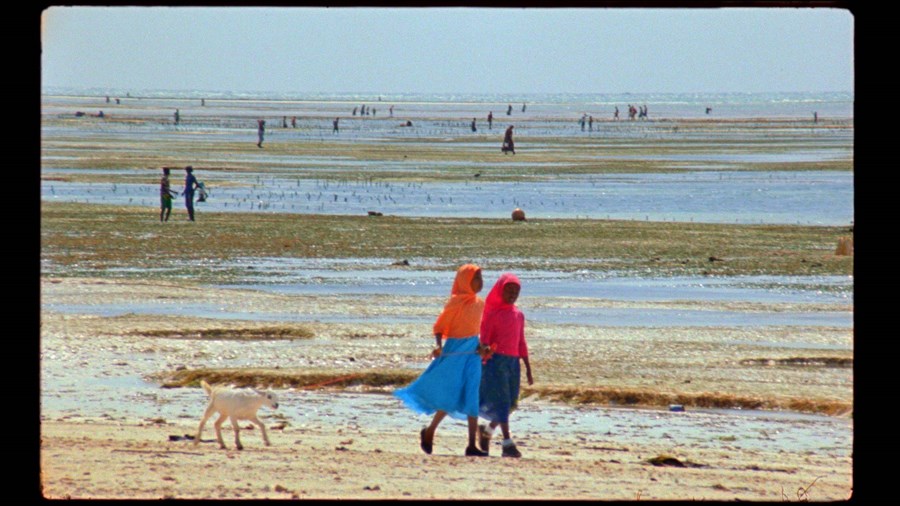
Samsara (2024)
Audiences and critics have described Samsara as transformational, but does Patiño think the cinema can stimulate altered states of consciousness? ‘I think it has all the power to. You can control the experience with light and sound. There is enormous potential there.’ The big difference between watching Samsara at home and in a cinema has a lot to do with the kinds of interactions these spaces afford the viewer. Contemplative and durational, the darkness of the cinema gives ample time and space to this exchange: ‘Suddenly the theatre becomes a collective, meditative experience.’ And with that, our time is up, and we alight back to the pressing, worldly concerns of the day.
SAMSARA IS RELEASED IN CINEMAS AND ON CURZON HOME CINEMA ON 26 JANUARY
